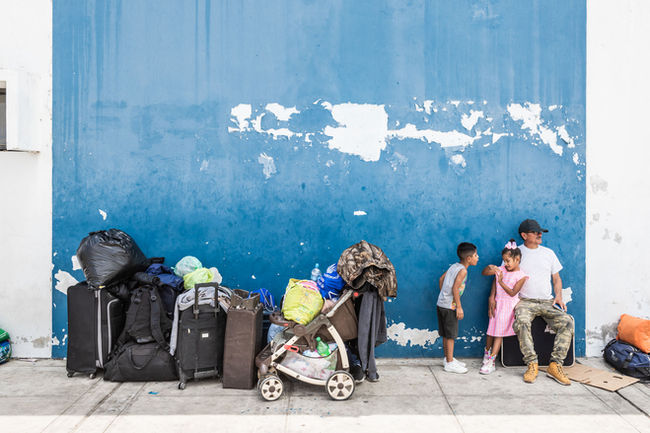Wall
Once the wealthiest nation in Latin America, Venezuela's vast oil reserves have not shielded it from descending into a profound economic crisis. This downturn has sparked the largest migration movement within the continent, with over five million Venezuelans departing to seek better opportunities in neighboring countries. Initially, many sought refuge in Colombia, but as opportunities dwindled and survival became increasingly difficult, a significant number of Venezuelans ventured further south to Peru, Chile, and even Argentina in pursuit of a livelihood.
The countries of Venezuela, Colombia, Ecuador, and Peru are all members of the Union of South American Nations (UNASUR), which, until June 2019, allowed for visa-free travel among its member states. This policy facilitated the movement of people facing economic and social challenges within their home countries.
However, the situation shifted on June 15, 2019, when Peru revised its immigration policies concerning Venezuelan migrants, introducing a requirement for a humanitarian visa to enter the country. This move marked a significant policy shift aimed at managing the influx of Venezuelan migrants. Shortly thereafter, on August 25, Ecuador adopted a similar stance, imposing visa requirements on Venezuelans wishing to enter its borders. These changes reflect the broader regional responses to the Venezuelan migration crisis, underscoring the challenges of balancing humanitarian support with national security and resource management.

Upon arriving in Tumbes, a Peruvian town nestled at the border with Ecuador, many Venezuelan immigrants learned for the first time about the new visa requirements to enter Peru. Venezuelans now needed a valid Peruvian visa to continue their journey southward. To apply for this visa, they were required to travel to Loja, the nearest Ecuadorian city with a Peruvian consulate. Complicating matters further, re-entry into Ecuador necessitated a valid Ecuadorian visa, creating a bureaucratic loop that left thousands stranded at the Peru-Ecuador border.
In documenting this scenario, I shifted away from conventional documentary photography. Instead, I concentrated on a modest section of the wall within the Peruvian immigration office complex. This specific location became emblematic of the immigrants' suspended dreams, representing the physical and bureaucratic barrier halting their progress into Peru. Over 15 days, I captured the ebb and flow of immigrants who gathered, rested, or waited in front of this wall, photographing them in their "found situation".
Each photograph was taken in what I refer to as their "found situation" — a method ensuring that the subjects and their possessions were documented exactly as they were encountered, without any staging or alteration. Following the visual documentation, I engaged with the migrants to delve into their personal stories, conducting interviews that would bring depth and context to the images. These conversations were initiated only after the photographs were taken, respecting the migrants' privacy and dignity by seeking their consent to share their stories.These captions offer a glimpse into the lives of Venezuelan immigrants caught in a web of international policy and the pursuit of a better future.
Location: Tumbes, Peru
Date: 19/08 - 03/09/2019
Methodological Approach and Critical Reflection
Rather than pursuing the conventional documentary approach of capturing emotionally charged or dramatically suffering moments that typically characterize forced migration narratives, the photographer deliberately chose to document what appeared to be static and serene scenes of immigrants processing paperwork and waiting. This methodological choice was rooted in revealing the extraordinary nature embedded within the seemingly mundane process of "waiting" — a liminal state that defines much of the migrant experience yet remains largely invisible in mainstream visual discourse. By focusing on the varied relationships between people in the images and their differential ability to cross the "wall" based on the identity documents they possessed, these images sought to avoid reducing the individuals to mere "migrating objects" defined solely by their displacement. The wall itself functions as both literal barrier and metaphorical stage, prompting a self-critical examination of the documentary photographer's own position within this process. This approach questions whether photographers inadvertently corner people with lived experiences into predetermined visual frames, transforming complex human realities into digestible spectacles designed to capture audience attention and critique social issues. The work interrogates the extent to which such documentary efforts genuinely raise awareness about crises experienced by "others," or whether they risk further alienating the lived realities of the people photographed by converting their experiences into visual commodities for exhibition walls — ultimately reducing individuals with complex lives and stories to objects of voyeuristic consumption that serve to inform, civilize, and perhaps most troublingly, entertain audiences while maintaining comfortable distances from the actual struggles being documented.







